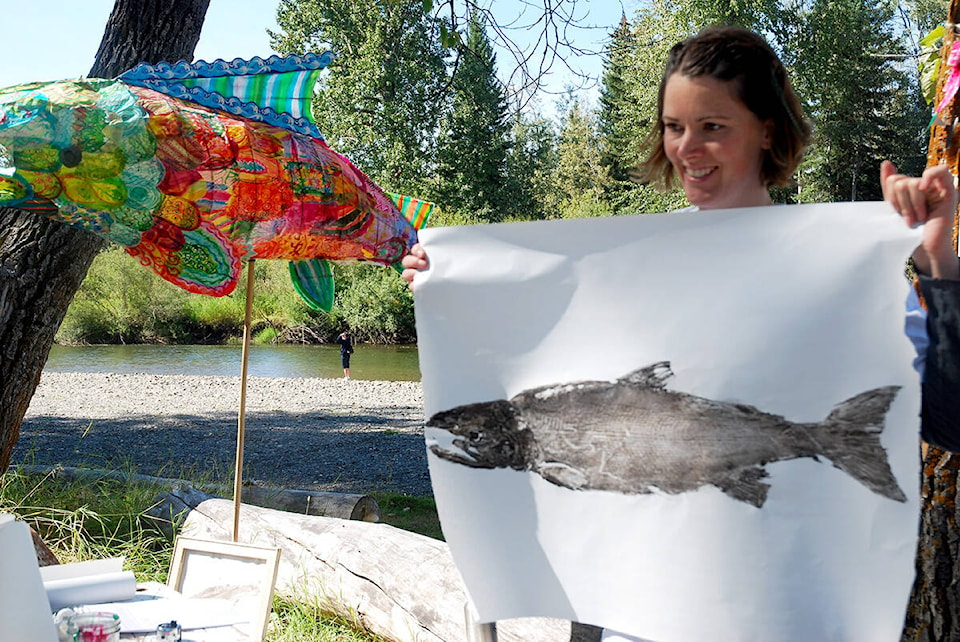By Dina Stephenson
Annually at the Horsefly Salmon Festival in September, people of all ages can participate in a fish printing art called Gyotako. For around 20,000 years, people have been making prints of things they find in nature.
In Japan, a particular type of nature-oriented printing technique emerged in the 19th century. Gyotaku, which literally translates into “fish” (gyo) and “rubbing” (taku), is an art that produces imprints of fish through the method of rubbing. The method itself is like Chinese stone rubbing, an ancient method of reproducing inscriptions originally made in metal, bone, or stone. Gyotaku was first introduced by fishermen, who were using the technique to make a record of their trophy catches. Over time this technique was used for scientific illustration, an education tool, and a modern art method.
According to another legend, it was an emperor of Japan who wanted to keep an accurate account of all his catches and commissioned prints to be made of the different types of fish that he caught.
As photography was a new technology still unavailable to all, fishermen would keep a chest of rice paper, nontoxic sumi-e ink, and a set of brushes on board so they could easily and immediately make an ink etching of their catch. After that, the fish would be rinsed off of ink and then released, taken to the market or eaten.
These utilitarian prints were incredibly life-like and accurate, often being used to determine the fishing contests in the country. When done properly they retained even subtle patterns and textures of the fish.
The relatively simple black ink prints later developed into an art form, where fishermen would add rich colours and environmental details to their work with brushes. The knowledge of Gyotaku was first spread to the western audience in the mid-20th century.
The annual Horsefly River Salmon Festival is taking place Sept. 10 and 11 to celebrate the return of the sockeye salmon to their spawning grounds on the Horsefly River.
